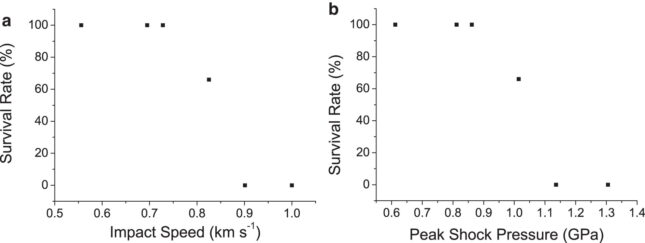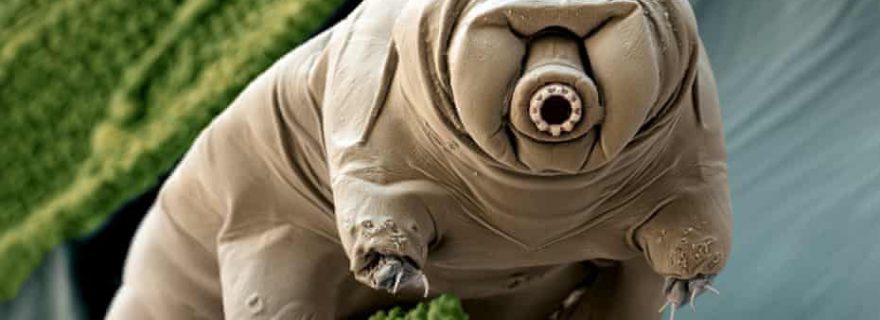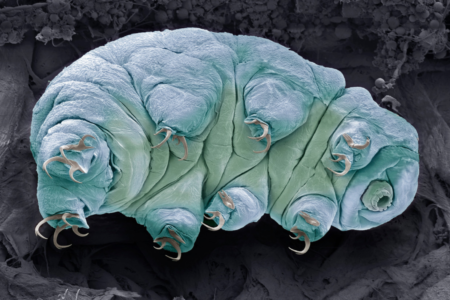Moonshot Tardigrades: Galactic Hitchhikers?
Tardigrades can survive anything, right? Brand new research takes another look at this question.
Tardigrades, known from the logo of Leiden Science Magazine, are microscopic animals known for their resilience. They can survive almost anything: extreme heat, extreme cold, extreme pressure, places where there is no oxygen or filled with dangerous chemicals. You can find tardigrades in hot springs, on the highest mountains of the Himalayas, in the deep sea, in trees of a tropical forest, or under a thick layer of ice. Which is all well and good, but have they ever been shot from a gun and lived to tell the tale? Now that sounds like Science with a capital S, so let us investigate.
Okay, so it’s not only for a laugh; there’s a real reasoning behind this idea. One of the great outstanding questions in astronomy and biology is whether we - Earthlings - are the only living species in this universe. And if not, would it be possible for living creatures to travel from one planet to another? In this case you should not be thinking about highly developed, intelligent organisms on fancy spaceships, but about chunks of space debris which “accidentally” take some living beings with them. This idea, where life hitchhikes on interplanetary rocks, is called panspermia. It is not as strange a theory as it may seem at first: we already know that astronauts who landed on the moon took bacteria with them. Every planet or moon has a myriad of meteorite craters on its surface, and you can imagine such a chunk carrying water, amino acids, or even life itself.
The problem of panspermia is that it is actually really hard for life to survive in outer space, where there is no oxygen, a lot of radiation, and extreme cold. If they are alive after the voyage itself, they also hit a planet surface with a massive crash. Tardigrades are known to be able to survive under such extreme duress, so perhaps the bottleneck for them to survive an interplanetary trip might be the shock of the landing killing them. You might already see where this is going: we would like to know whether our most hardy animal can live a massive impact. If they can, perhaps they might be able to do so in space, as well, and could be evidence for a panspermia theorem. So hey, time to shoot some tardigrades from a big gun.
Alejandra Traspas and Mark Burchell of the University of Kent shot tardigrades from a giant light gas airgun, typical for research done on meteor impacts. They survived a shot of 3200 km/h, which involved a pressure of 1.14 gigapascal, which is about equivalent to the entire population of Katwijk jumping on your back at once. If the little animals were shot with even higher speeds even they did not survive any more.

So what does this mean for the theory of panspermia? If you have an organism which is as invulnerable as a tardigrade, it would be possible for them to survive an excursion from the Earth to the Moon, or Mars and its moon Phobos. Longer distances become a lot tricker, not just because of the pressure of the impact, but also because of the radiation in outer space. Smaller distances should be possible for the tardigrades, but very long space travel seems to be impossible. Which is a sigh of relief for astronauts worrying about contaminating outer worlds with Earth life, but a downer for those who would have liked to see an interstellar tardigrade civilization.
Article:
- Alejandra Traspas and Mark J. Burchell; Tardigrade Survival Limits in High-Speed Impacts—Implications for Panspermia and Collection of Samples from Plumes Emitted by Ice Worlds. Astrobiology. ahead of print http://doi.org/10.1089/ast.2020.2405





0 Comments
Add a comment